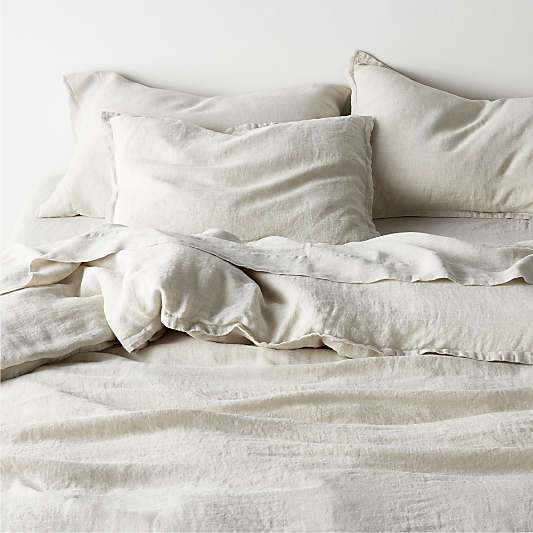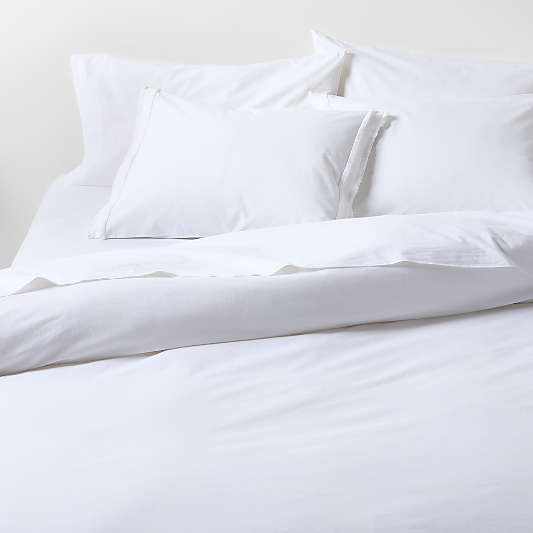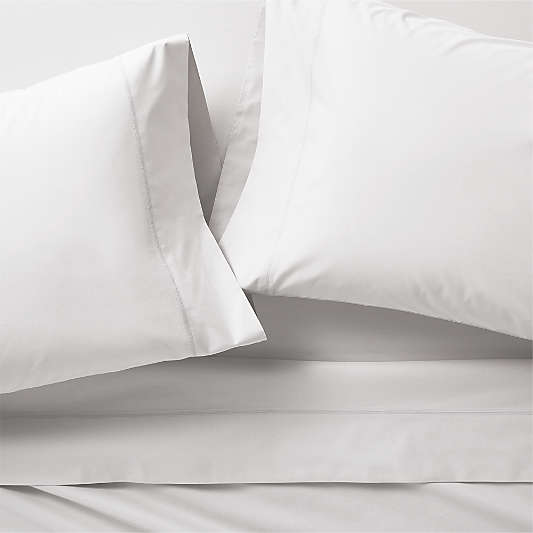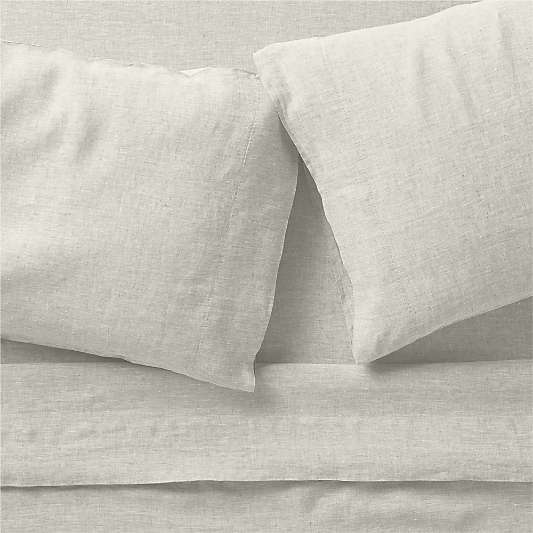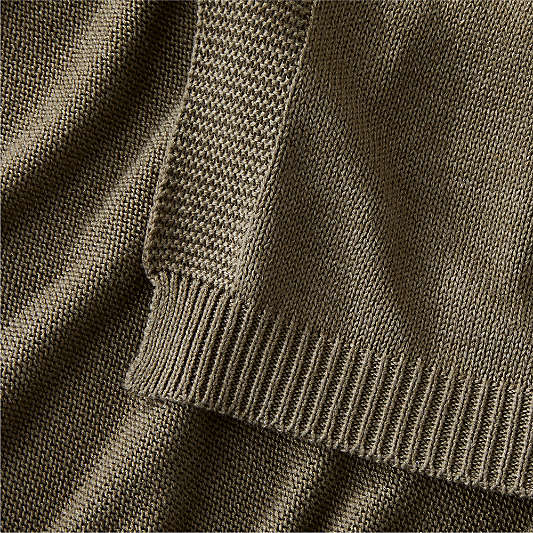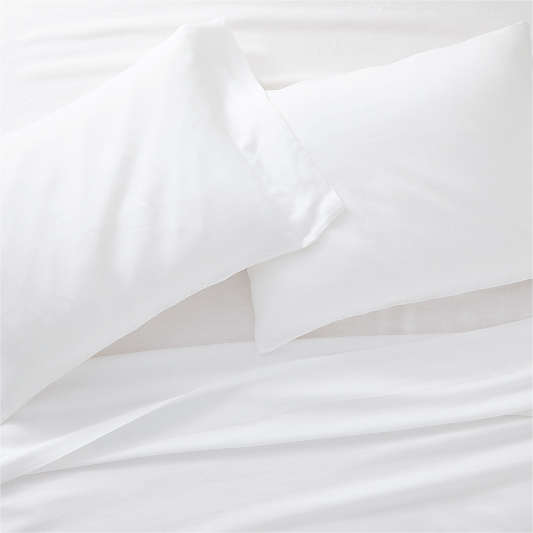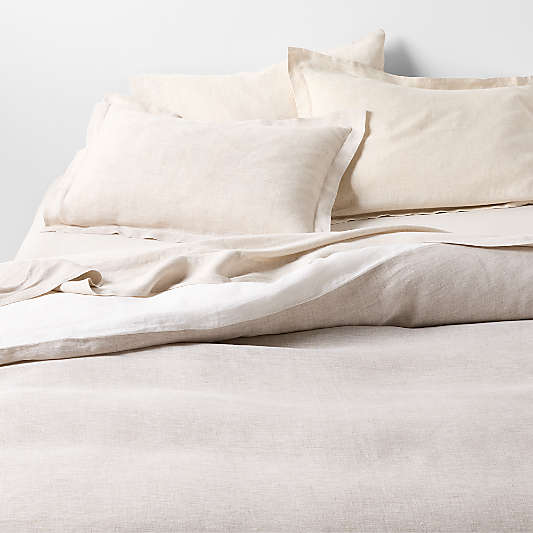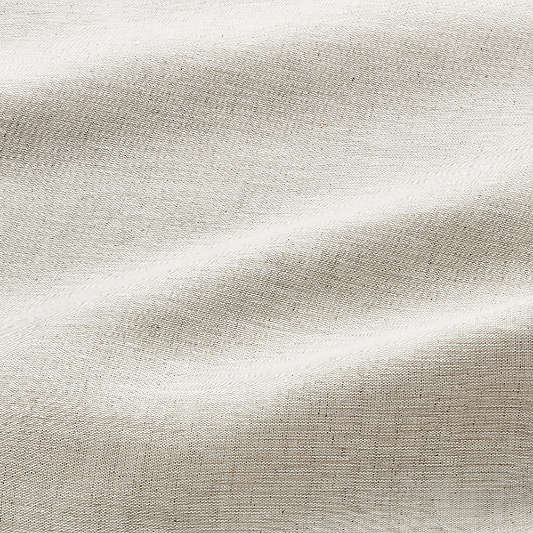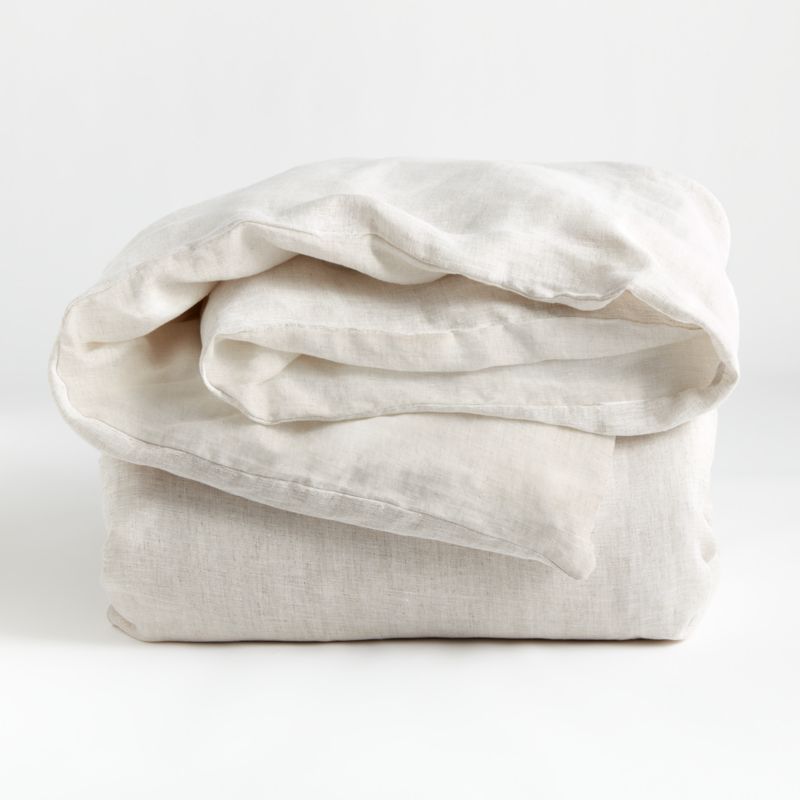6 min read


How to Layer a Bed
pro bedding layering tips
Your bed should feel like a relaxing sanctuary where you can unwind, rest and reset. But how do you get that feeling? By curating your bedding and accessories, you can create a cohesive look that excels in both comfort and style. From bed layering techniques to the very last throw pillow, read on to learn our pro tips and advice for how to style a bed the modern way.


start with high-quality bedding
Loving how your bed feels is just as important as how it’s styled. When picking out bedding material, remember that different fabrics are better for different types of sleepers. Linen gives you the most laid-back look and naturally regulates body temperature, so it’s perfect for keeping warm sleepers cool and vice versa. Cotton percale is a nice all-season choice that’s crisp and cool to the touch, while hemp and flax feel light and airy similar to linen. Keep reading to learn about our different bedding materials and find the perfect one for you.
HEMP
Good for you, better for the earth. Our naturally textured hemp bedding softens with each wash so it only gets better with time. Sleeps cool and breathable.
ORGANIC COTTON BEDDING
Like snuggling up to your favorite lived-in T-shirt. Our finely woven, mid-weight organic cotton bedding is a great all-season pick.
COTTON PERCALE
Crisp and cool for hot sleepers, our cotton percale bedding is the lightweight fabric you’re looking for during warmer months.
LINEN
Soft to the touch with that casual, lived-in look, our linen bedding works to regulate your body temperature year-round.
COTTON SATEEN
Made of ultra-fine cotton with a subtle sheen, our buttery sateen bedding feels like a warm embrace on cooler nights.


choose your bedding colors
Once you’ve determined which bedding materials work best for you, it’s time to narrow down color and design. To start, decide if you are more interested in cool or warm tones. Then, play within a single color family by mixing shades of that color–light, medium and dark. This layering of tones will make your bed look inviting and plush.
Remember, you see less of your sheets when your bed is made. So if you’d like some color but want to keep it subtle, the fitted sheet is a good place to experiment. For max color, get a richly-hued duvet because it’s always on display.
If you can’t pick a color palette, go to your closet and pull out your favorite outfit. Chances are if you are comfy in those colors, you’d be comfy in a bed that color. Read on for bedding ideas inspired by our favorite colors and patterns.
SIMPLE & CLASSIC
Regardless of your home’s overall color scheme, white bedding is an attractive option one hundred percent of the time. It’s an easy way to make your bed feel soothing and fresh with the crisp look of a great hotel room. For smooth, clean edges, go with a no-frills white linen or crisp cotton duvet. Having a base of white linens is the easiest way to make your bedding design versatile from season to season.
BEAUTIFUL & PATTERNED
Make your bedding design a little more dynamic by selecting a pattern as its focal point. Our advice? Bold patterns tend to be energizing, so pick designs with a more subtle, calming look.
SINGLE-TONE & SWAPPABLE
Choose one hue for your bedding design for a minimal, relaxing effect. A deep saturated color offers a moody, cozy look while a lighter tones create an airier feel. Match the duvet and pillow shams with same-tone cotton sheets. It’s fun to treat your bed like your wardrobe and swap to a new hue each season. Or, you can also add decorative throw pillows to change up the vibe. Mix shapes and sizes and be creative with your color additions.

layer bedding to create a textured look
BED LAYERING ESSENTIALS
To get that sink-in, cozy feeling it’s essential to layer the bed. You’ll need sheets, a duvet, a quilt, shams and a throw pillow or two.
Start with your foundation: the fitted sheet. Choose a material that complements your sleep style and a color that complements your decor. Next, layer on the flat sheet. Flat sheets can be used to incorporate a pop of color or pattern into your overall look. On top of that comes your comforter or duvet. Bedding with details like pleating or ruching lend depth and textural interest to your bed. As a finishing touch, consider adding a throw blanket to the foot of the bed. The throw blanket can easily be changed out seasonally to update your bedding without the need to purchase a full new set.

use throw pillows to add style
A well-layered bed includes pillows that you use for sleeping as well as a selection of accent pillows. Decorative pillows are the easiest way to add a layer of style, texture and color.
Some duvets or quilts will come with pillow shams, which are decorative pillow covers that coordinate with the bedding. Your sheet set should also include pillowcases for your regular pillows. To layer your pillows, start by placing the pillows you use to sleep at the head of the bed. On top of that, layer your pillows with shams. Finally, have some fun with a selection of decorative throw pillows in various shapes and sizes, colors and textures. As you add new rows of pillows, make sure they are slightly smaller than the row behind them.
Remember that odd number combinations are often the most visually appealing. We love the look of an asymmetrical arrangement. This is great for busy mornings so you’re not spending valuable time going around lining up corners and fluffing pillows to get the style just right.
For a more formal look, go symmetrical with pillows balanced on both sides. Get creative with the shapes you use—mix and match circles with squares. Then, finish the look with a few decorative accents such as art above the bed, a vase of fresh flowers or an interesting table lamp. These kinds of touches add personality and character to your bedroom while also making it a comfortable and inviting space. For more pillow styling advice, check out our throw pillow style guide.

styling different sized beds
The main difference between styling a full or queen bed versus a king bed is the size and the amount of pillows and blankets needed. The style of bedding you choose may also differ. For example, you may go for a bold, colorful duvet on a queen bed to make a statement in a smaller space, while a king bed may require a more neutral duvet to balance out the larger space. Consider these factors when choosing the elements you use to style your bed.




